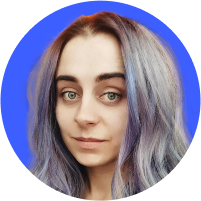Privacy couture: Everything you need to know about anti-surveillance fashion
We live under almost constant surveillance. At the store, on the streets, and sometimes even at work — your every step is followed by a camera lens. This unfortunate situation has birthed a new trend among stylish privacy advocates: anti-surveillance fashion. In this article, we will explore the ideas behind anti-surveillance fashion, trace its roots, and explain how it works.
Contents
What is anti-surveillance fashion?
Anti-surveillance fashion is an innovative approach to personal privacy in an age of pervasive surveillance. It merges modern aesthetics with the latest advancements in anti-surveillance technology to oppose the widespread use of facial recognition, CCTV cameras, and other forms of digital monitoring.
The trend isn’t just about making a fashion statement — it’s a practical response to pervasive and unnecessary tracking. Anti-surveillance clothing uses clever design choices, special fabrics, and intricate patterns to disrupt surveillance cameras, obscure defining facial features, or block signals from tracking devices.
You can think of anti-surveillance clothing as a form of modern camouflage. It represents a shift in the purpose of fashion from expressing your style or protecting yourself from the elements to an instrument of privacy and a shield against invasive digital scrutiny.
Anti-surveillance fashion designers also aim to make a statement about human rights and use their art to comment on the state of privacy in our digital age. It’s also a proactive step towards taking control of your visibility in a world where privacy is a luxury and anonymity is virtually impossible.
How does anti-surveillance fashion work?
The concept of anti-surveillance fashion is not entirely new, but its relevance and sophistication have grown significantly in recent years. The most recent anti-surveillance fashion includes a range of garments and accessories, from hoodies and scarves with patterns that disrupt image recognition to hats and sunglasses designed to shield your facial features. Let’s take a closer look.
Camouflage
In its early stages, anti-surveillance fashion was more about straightforward methods of disguise and concealment, more like traditional camouflage techniques used by the military. Using colors and patterns to blend into your surroundings helped avoid immediate detection. But this approach, while effective in specific scenarios, is useless when advanced surveillance technology (like voice recognition, gait detection, and thermal vision) comes into play.
Disrupting patterns
When high-definition cameras and facial recognition software became widespread, it necessitated a more advanced approach. Designers and tech companies began experimenting with fabrics and patterns that could disrupt digital surveillance mechanisms.
People started developing fabric with complex patterns that were found to confuse facial recognition algorithms, making it difficult for cameras to identify or track people. These patterns, often resembling abstract art, are carefully designed to trick facial recognition systems into thinking it is seeing dogs, zebras, or giraffes instead.
Signal-blocking fabrics
The evolution of anti-surveillance fashion also saw the creation of new materials. Fabrics that can block RFID (radio frequency identification) signals were introduced to prevent secret scanning of people’s phones, credit cards, passports, and ID cards. Some designers have even created anti-surveillance clothing lined with signal-blocking fabric, which prevents GPS tracking on your devices.
IR-reflective and absorbent fabric
Some anti-surveillance clothing incorporates materials that either reflect or absorb infrared (IR) light, essentially making the wearer invisible in darkness or ruining the footage of night-time cameras with extensive reflection of light.
Metamaterials
Engineers have been working for years to incorporate metamaterials into clothing and achieve invisibility. Metamaterials are meant to bend light or electromagnetic waves around the wearer, effectively hiding them from certain types of cameras.
Examples of anti-surveillance fashion
One thing designers and tech companies have in common is the constant need to create something new. Naturally, some of them are merging their expertise to create garments and accessories that are not only fashion-forward but also help modern people increase their privacy. Here are a few examples:
Adam Harvey’s Stealth Wear and Hyperface
Adam Harvey, a renowned artist and privacy advocate, is widely considered to be a pioneer of anti-surveillance fashion. His project Stealth Wear includes clothes designed to protect the wearer from thermal imaging, a technology commonly found in surveillance drones. One of the most striking pieces is a fully metallic burqa that makes the person wearing it invisible to thermal detectors.
Harvey’s other project, titled Hyperface, focuses on overloading facial recognition algorithms instead of hiding the person wearing the clothes. The Hyperface prints contain thousands of human-like features, diverting the attention of the software from the real face to multiple false faces. His garments are not only functional as privacy-protecting tools — they also make a bold aesthetic statement.
Lauren Bowker’s Air collection
When we talk about camouflage techniques, most people’s minds drift to the green and brown camo used by the military. However, modern designers have taken camouflage much further by creating fabric that is able to react to its surroundings and change its color accordingly.
Lauren Bowker took that technology and created her Air collection. It features a range of accessories that change their color in response to different environmental conditions. While not directly anti-surveillance, this innovative fabric represents the intersection of fashion, technology, and environmental awareness and could help lay the groundwork for the next step in camouflage techniques.
Vollebak’s Black Squid jacket
Vollebak, a brand known for its high-tech clothing, created the Black Squid jacket that mimics the adaptive camouflage of a squid. Its surface is made from a material containing over two billion microscopic glass spheres, reflecting different colors depending on the angle of light and the viewer’s perspective. It makes the wearer hard to detect in varying light conditions, further expanding the modern concept of camouflage.
ISHU’s anti-flash scarf
The ISHU scarf, designed by Saif Siddiqui, is a practical, stylish, and relatively straightforward anti-surveillance accessory. It’s made of highly reflective fabric that reacts to camera flashes, obscuring the wearer’s features in any photos taken with a flash. It is particularly popular among celebrities seeking to ruin paparazzi photos — only the bright silhouette of the scarf can be seen in images taken with a flash.
Zach Blas’ Facial Weaponization Suite
The Facial Weaponization Suite is a series of masks that act as a protest against biometric facial recognition. They are created by aggregating biometric data from multiple faces and creating amorphous masks that cannot be detected by facial recognition technology. While more conceptual and less practical for daily wear, these masks are a statement of peace, often worn by protestors to further emphasize their fight for human rights.
Why do we need anti-surveillance fashion?
Today, anti-surveillance fashion is no longer a fringe concept but a growing niche in the fashion industry. It appeals not only to regular privacy-conscious people but also to activists, journalists, and freedom fighters who must protect their identity and whereabouts to avoid persecution.
Protection for your civil rights
At its heart, anti-surveillance fashion is about asserting one’s right to privacy. Most of our digital footprints are massive and virtually impossible to control. Various companies track our personal data — often without us even realizing it — and data brokers collect and sell it to whoever is willing to pay for it.
Naturally, some people get frustrated that they can’t control their data, and wearing clothing that counters surveillance is a way to reclaim some power over their personal information and visibility.
Protection from mass government surveillance
Some people live and work in totalitarian regimes where their movements are being tracked 24/7. In this case, anti-surveillance clothing can be a crucial tool for protecting their movements and activities. By getting a break from the constant surveillance, people hope to avoid unfair treatment and discrimination. In some cases, just being at the wrong place at the wrong time could be enough to end their career or have them face prosecution. Anti-surveillance clothing allows them to maintain some personal freedom and protects them from the misuse of their personal information.
Disadvantages of anti-surveillance fashion
However, while anti-surveillance clothing offers protection for individuals, it also has more than a few drawbacks:
- Anti-surveillance clothing won’t necessarily be effective against all types of surveillance, particularly as technology advances. While a patterned scarf is effective against the dangers of facial recognition software, it may not protect you from gait recognition or voice analysis.
- Many anti-surveillance fashion items are produced by niche designers or tech companies and can be extremely expensive. The high cost makes it a luxury rather than a practical solution for most people.
- You could face legal implications for using clothing that deliberately obstructs identification, especially if it’s required for security reasons.
- Wearing anti-surveillance fashion is controversial in general because it can be used to hide after committing a crime to avoid detection by law enforcement.
- Most anti-surveillance clothes have a distinctive look that won’t necessarily appeal to everyone’s fashion sense. Practicality is also a concern because some designs are not suitable for casual everyday wear.
- Wearing anti-surveillance clothing might give a false sense of security, leading people to underestimate other forms of surveillance.
The future of anti-surveillance fashion
Mass surveillance is likely to become only more intrusive, so people will start looking for new ways to avoid it. What awaits us in the landscape of anti-surveillance fashion?
- Advanced material science will bring on the textile revolution, taking camouflage to a whole new level.
- Incorporating smart technology into clothing will make them detect and counter various security measures depending on the situation.
- As more designers join the trend, we can hope for more accessibility and affordability, moving anti-surveillance clothing from niche markets to mainstream fashion.
- Ongoing ethical and legal discussions will hopefully lead to clearer guidelines and regulations regarding the use of anti-surveillance clothing, balancing individual privacy rights with security concerns.
- A rise in public awareness about surveillance issues is likely to lead to greater demand as people include anti-surveillance fashion into their daily routines.
Want to read more like this?
Get the latest news and tips from NordVPN.

